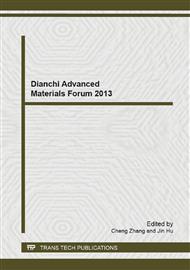p.142
p.146
p.150
p.154
p.159
p.165
p.169
p.173
p.177
Pore Structure and Mechanical Properties of ZrC/SiC Multi-Components Modified C/C Composites
Abstract:
The ZrC/SiC multi-components modified C/C composites were prepared by using a hybrid precursor containning polycarbosilane and organic zirconium-contained polymeric precursor as impregnant and C/C composites of low density as preform. The porosity, microstructure and mechanical properties of samples were characterized with mercury injection apparatus, scanning electron microscopy and universal electron testing machine respectively. The results show that the porosity and average pore diameter decrease firstly and increase subsequently with the increase of organic zirconium content of the precursor. When the content of organic zirconium is 50%, the porosity and average pore diameter reach minimum which were7.27% and 0.0795um respectively. The most probabilistic pore diameter shifted from 10-100um to 1-10um at the same time; Meanwhile, the flexural properties also increases and drops immediately as the content of organic zirconium in the precursor adds. When the content of organic zirconium is 25%, the flexural strength reaches maximum of 245.20MPa.The improved flexural properties is attributed to the proper bonding of fiber-matrix interface and the low porosity of samples.
Info:
Periodical:
Pages:
159-164
Citation:
Online since:
November 2013
Authors:
Price:
Сopyright:
© 2014 Trans Tech Publications Ltd. All Rights Reserved
Share:
Citation:


